Nuclear plant neighboring HK proud of its ecology work
By Shan Jie in Shenzhen Source:Global Times Published: 2019/8/22 18:38:40
○ The Daya Bay Nuclear Power Plant is home to many precious wildlife species
○ From the top managers to grass-roots volunteers, staff all work for environmental conservation in the plant area
○ The plant has been providing electricity to Hong Kong and is open to the region
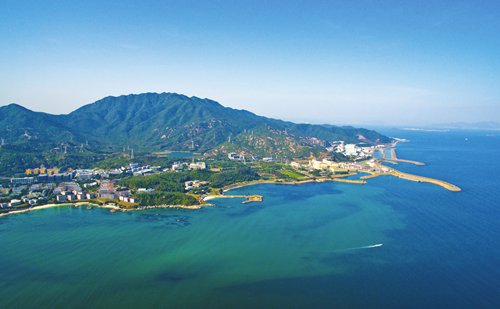
But the Daya Bay Nuclear Power Plant in Shenzhen, South China's Guangdong Province, proves the opposite.
Egrets can often be spotted at the Daya Bay. The logo of China General Nuclear Power Corporation (CGN), which owns the Daya Bay power plant, is also a flying egret.
The site of the power plant resembles a coastal holiday resort. It is located in a bay surrounded by dark green mountains, and the tranquil waters are often a cobalt blue.
For many employees here, one of their favorite pastimes is wandering along soft silver sand under tall coconut trees right after taking their meals in canteens that have a view of the sea.

Besides egrets, Daya Bay is also home to many other species, especially many protected ones, such as crested goshawks, buzzards, collared scops owls and pythons. The area is also home to at least 15 types of corals.
On August 7, a report on the Daya Bay plant's biodiversity was released by CNG. "The Daya Bay base proves that nuclear power is a green, clean and low-emission energy, which has been playing a significant role in the construction of bio-ecology civilization in the Guangdong-Hong Kong-Macao Greater Bay Area," Zhao Fuming, chief safety officer of the Daya Bay Nuclear Power Operations and Management Co (DNMC), told the Global Times earlier this month.
The power plant's emission reduction effect during the generation of electricity is equivalent to the effect of planting more than 1.6 million hectares of forests, which is about the size of eight Shenzhen cities or one Beijing city.
Since 1994, the Daya Bay station had provided 254.674 billion kilowatt hours (kwh) of electricity to Hong Kong, read a statement the DNMC sent to the Global Times.
Moreover, Daya Bay Nuclear Power Station has been steadily providing electricity to Hong Kong for 25 years, making a great contribution to Hong Kong's development, economy and environment.
Wildlife oasis
In the 1980s, research from Dapeng Peninsula, where the Daya Bay plant is located, showed that corals covered 70 percent of the sea coast.
Shenzhen began developing rapidly in the decades that followed, and in recent years, the coverage of corals in the same area has declined to only 30 percent.
However, the Daya Bay plant has provided an underwater oasis for the corals.
According to the report on Daya Bay plant's biodiversity, specialists from the Dapeng New District Coral Protection Association dove into the water around the power plant and found a great number of corals that were in good condition.
The report noted that the 11 kilometers of winding coast at the Daya Bay nuclear power station provided a safe harbor for precious corals. "A total of 15 corals that belong to the nation's second-class protected birds have been discovered here."
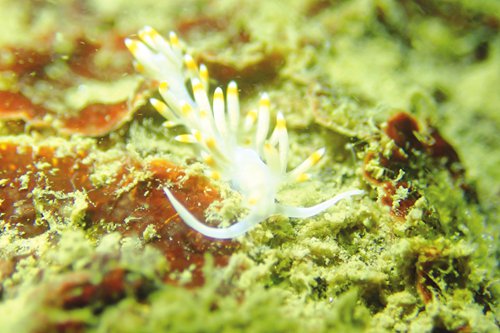
After a long period of wildlife protection and habitat recovery efforts, the Daya Bay station has attracted a large number of egrets. Every year in late spring and early summer, these large birds visit at the Daya Bay site, surprising employees and residents here.
On the 10 square kilometers of land at the Daya Bay station, six key protected species have been found - crested goshawks, buzzards, collared scops owls, tiger frogs, pythons and ricebirds.
Moreover, in 2016, several Chinese white dolphins visited the nearby waters of the Daya Bay plant, and were seen chasing each other and playing. The species is nicknamed "the panda of the water" and is listed as a national first-class protected animal.
"It shows the water quality around the Daya Bay Nuclear Power Plant is excellent," read the report.
Great efforts
Environmental protection work in the Daya Bay plant is extremely thorough.
The company has established an environment management and coordination group at the top management level to promote conservation work.
The plant has also set up 10 environmental monitoring spots within a 10-kilometer radius. Long term monitoring has shown that the radioactivity levels around the power plant are the same as when the plant began operating. Data from the five monitoring buoys in the sea near the plant show that the water has been kept at a good quality.
Tests on air, earth, underground water and animals show that no radioactive substances were found in the samples, which cover more than 20 common foods, including chickens, fish, litchis and algae.
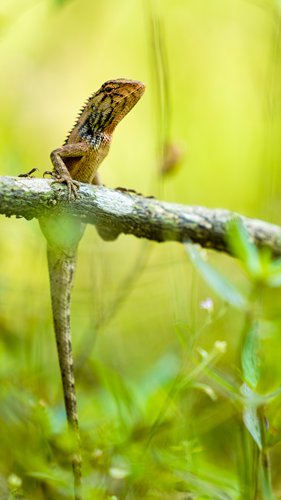
The report on Daya Bay plant's biodiversity was released by CGN and is supported by the Shenzhen Mangrove Conservation Foundation and the Dapeng New District Coral Protection Association.
It is the first such report in the history of China's nuclear power industry.
In addition to Daya Bay, many other nuclear power stations in China have also contributed to local environmental and ecological conservation efforts.
On March 28, 2018, about 10 Chinese white dolphins appeared at Guangdong's Taishan Nuclear Power Plant, 300 kilometers from the Daya Bay, Guangdong-based South Daily reported. The report said that the dolphins are frequent visitors to the Taishan plant.
The waters near the Hongyanhe Nuclear Power Plant in Northeast China's Liaoning Province are a habitat for spotted seals. To protect the seals, the plant implemented strict regulations on construction, said CGN on its website.
Greener Hong Kong
The Daya Bay Nuclear Power Station is only about 60 kilometers from Hong Kong, and has provided 254.674 billion kilowatt hours (kwh) of electricity to the city since 1994. It sends about 12 billion kwh of electricity to Hong Kong each year, accounting for a quarter of its electricity supply.
The Daya Bay Nuclear Power Station has always provided clean and environmentally friendly energy, supporting the Guangdong-Hong Kong-Macao Greater Bay Area in its efforts to curb air pollution, Zhao said.
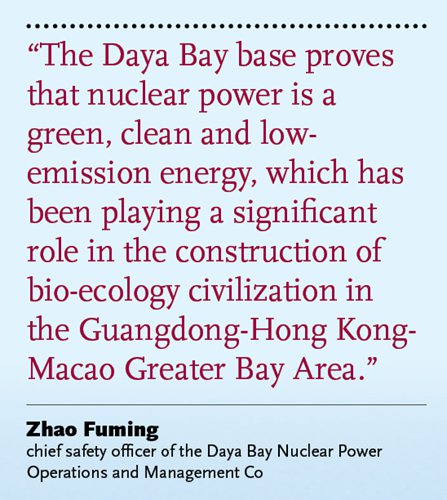
"Nuclear power is safe and stable. It essentially emits no residue or carbon emissions. We believe sustainable development of our nuclear projects will be one of the measures we take to ease global climate change," read the website of CLP Power Hong Kong, the power station's partner in Hong Kong.
The power plant is also open to the special administrative region. In 2018, a total of 2,628 Hong Kong residents visited Daya Bay.
The Hong Kong visitors are often amazed by our great ecology and beautiful scenery," Yu Bo, section chief of the public affairs branch at DNMC, told the Global Times.
The Hong Kong Observatory has also set up monitoring spots around the Daya Bay plant to check for any adverse impact on the environment, according to the DNMC.
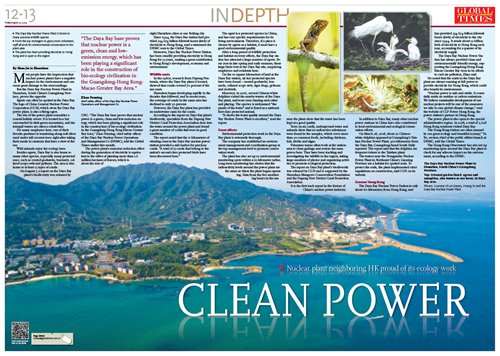
Newspaper headline: Clean power
○ From the top managers to grass-roots volunteers, staff all work for environmental conservation in the plant area
○ The plant has been providing electricity to Hong Kong and is open to the region

The Daya Bay Nuclear Power Plant in Shenzhen, South China's Guangdong Province. Photos: Courtesy of Lai Qianyu, Huang Yu and the Daya Bay Nuclear Power Plant
Most people have the impression that nuclear power plants have a negative impact on the environment and can cause great damage to the surroundings.But the Daya Bay Nuclear Power Plant in Shenzhen, South China's Guangdong Province, proves the opposite.
Egrets can often be spotted at the Daya Bay. The logo of China General Nuclear Power Corporation (CGN), which owns the Daya Bay power plant, is also a flying egret.
The site of the power plant resembles a coastal holiday resort. It is located in a bay surrounded by dark green mountains, and the tranquil waters are often a cobalt blue.
For many employees here, one of their favorite pastimes is wandering along soft silver sand under tall coconut trees right after taking their meals in canteens that have a view of the sea.

Egrets in Daya Bay area Photos: Courtesy of Lai Qianyu, Huang Yu and the Daya Bay Nuclear Power Plant
Wild animals enjoy the ecology here.Besides egrets, Daya Bay is also home to many other species, especially many protected ones, such as crested goshawks, buzzards, collared scops owls and pythons. The area is also home to at least 15 types of corals.
On August 7, a report on the Daya Bay plant's biodiversity was released by CNG. "The Daya Bay base proves that nuclear power is a green, clean and low-emission energy, which has been playing a significant role in the construction of bio-ecology civilization in the Guangdong-Hong Kong-Macao Greater Bay Area," Zhao Fuming, chief safety officer of the Daya Bay Nuclear Power Operations and Management Co (DNMC), told the Global Times earlier this month.
The power plant's emission reduction effect during the generation of electricity is equivalent to the effect of planting more than 1.6 million hectares of forests, which is about the size of eight Shenzhen cities or one Beijing city.
Since 1994, the Daya Bay station had provided 254.674 billion kilowatt hours (kwh) of electricity to Hong Kong, read a statement the DNMC sent to the Global Times.
Moreover, Daya Bay Nuclear Power Station has been steadily providing electricity to Hong Kong for 25 years, making a great contribution to Hong Kong's development, economy and environment.
Wildlife oasis
In the 1980s, research from Dapeng Peninsula, where the Daya Bay plant is located, showed that corals covered 70 percent of the sea coast.
Shenzhen began developing rapidly in the decades that followed, and in recent years, the coverage of corals in the same area has declined to only 30 percent.
However, the Daya Bay plant has provided an underwater oasis for the corals.
According to the report on Daya Bay plant's biodiversity, specialists from the Dapeng New District Coral Protection Association dove into the water around the power plant and found a great number of corals that were in good condition.
The report noted that the 11 kilometers of winding coast at the Daya Bay nuclear power station provided a safe harbor for precious corals. "A total of 15 corals that belong to the nation's second-class protected birds have been discovered here."

Anaspidea, also known as sea hares, in Daya Bay area. Photos: Courtesy of Lai Qianyu, Huang Yu and the Daya Bay Nuclear Power Plant
The egret is a protected species in China, and has very specific requirements for its living environment. Therefore, if a place is chosen by egrets as a habitat, it must have a good environmental quality.After a long period of wildlife protection and habitat recovery efforts, the Daya Bay station has attracted a large number of egrets. Every year in late spring and early summer, these large birds visit at the Daya Bay site, surprising employees and residents here.
On the 10 square kilometers of land at the Daya Bay station, six key protected species have been found - crested goshawks, buzzards, collared scops owls, tiger frogs, pythons and ricebirds.
Moreover, in 2016, several Chinese white dolphins visited the nearby waters of the Daya Bay plant, and were seen chasing each other and playing. The species is nicknamed "the panda of the water" and is listed as a national first-class protected animal.
"It shows the water quality around the Daya Bay Nuclear Power Plant is excellent," read the report.
Great efforts
Environmental protection work in the Daya Bay plant is extremely thorough.
The company has established an environment management and coordination group at the top management level to promote conservation work.
The plant has also set up 10 environmental monitoring spots within a 10-kilometer radius. Long term monitoring has shown that the radioactivity levels around the power plant are the same as when the plant began operating. Data from the five monitoring buoys in the sea near the plant show that the water has been kept at a good quality.
Tests on air, earth, underground water and animals show that no radioactive substances were found in the samples, which cover more than 20 common foods, including chickens, fish, litchis and algae.

Oriental garden lizard in Daya Bay area. Photos: Courtesy of Lai Qianyu, Huang Yu and the Daya Bay Nuclear Power Plant
Volunteer teams often work at the station area to clean garbage and restore the mangroves here. They have been tracking and investigating the wildlife in the region, taking large numbers of photos and organizing activities to promote ecological protection.The report on Daya Bay plant's biodiversity was released by CGN and is supported by the Shenzhen Mangrove Conservation Foundation and the Dapeng New District Coral Protection Association.
It is the first such report in the history of China's nuclear power industry.
In addition to Daya Bay, many other nuclear power stations in China have also contributed to local environmental and ecological conservation efforts.
On March 28, 2018, about 10 Chinese white dolphins appeared at Guangdong's Taishan Nuclear Power Plant, 300 kilometers from the Daya Bay, Guangdong-based South Daily reported. The report said that the dolphins are frequent visitors to the Taishan plant.
The waters near the Hongyanhe Nuclear Power Plant in Northeast China's Liaoning Province are a habitat for spotted seals. To protect the seals, the plant implemented strict regulations on construction, said CGN on its website.
Greener Hong Kong
The Daya Bay Nuclear Power Station is only about 60 kilometers from Hong Kong, and has provided 254.674 billion kilowatt hours (kwh) of electricity to the city since 1994. It sends about 12 billion kwh of electricity to Hong Kong each year, accounting for a quarter of its electricity supply.
The Daya Bay Nuclear Power Station has always provided clean and environmentally friendly energy, supporting the Guangdong-Hong Kong-Macao Greater Bay Area in its efforts to curb air pollution, Zhao said.

He noted that the units in the Daya Bay plant are always running at full power to provide electricity for Hong Kong, which could also benefit its environment.
"Nuclear power is safe and stable. It essentially emits no residue or carbon emissions. We believe sustainable development of our nuclear projects will be one of the measures we take to ease global climate change," read the website of CLP Power Hong Kong, the power station's partner in Hong Kong.
The power plant is also open to the special administrative region. In 2018, a total of 2,628 Hong Kong residents visited Daya Bay.
The Hong Kong visitors are often amazed by our great ecology and beautiful scenery," Yu Bo, section chief of the public affairs branch at DNMC, told the Global Times.
The Hong Kong Observatory has also set up monitoring spots around the Daya Bay plant to check for any adverse impact on the environment, according to the DNMC.

Newspaper headline: Clean power
RELATED ARTICLES: